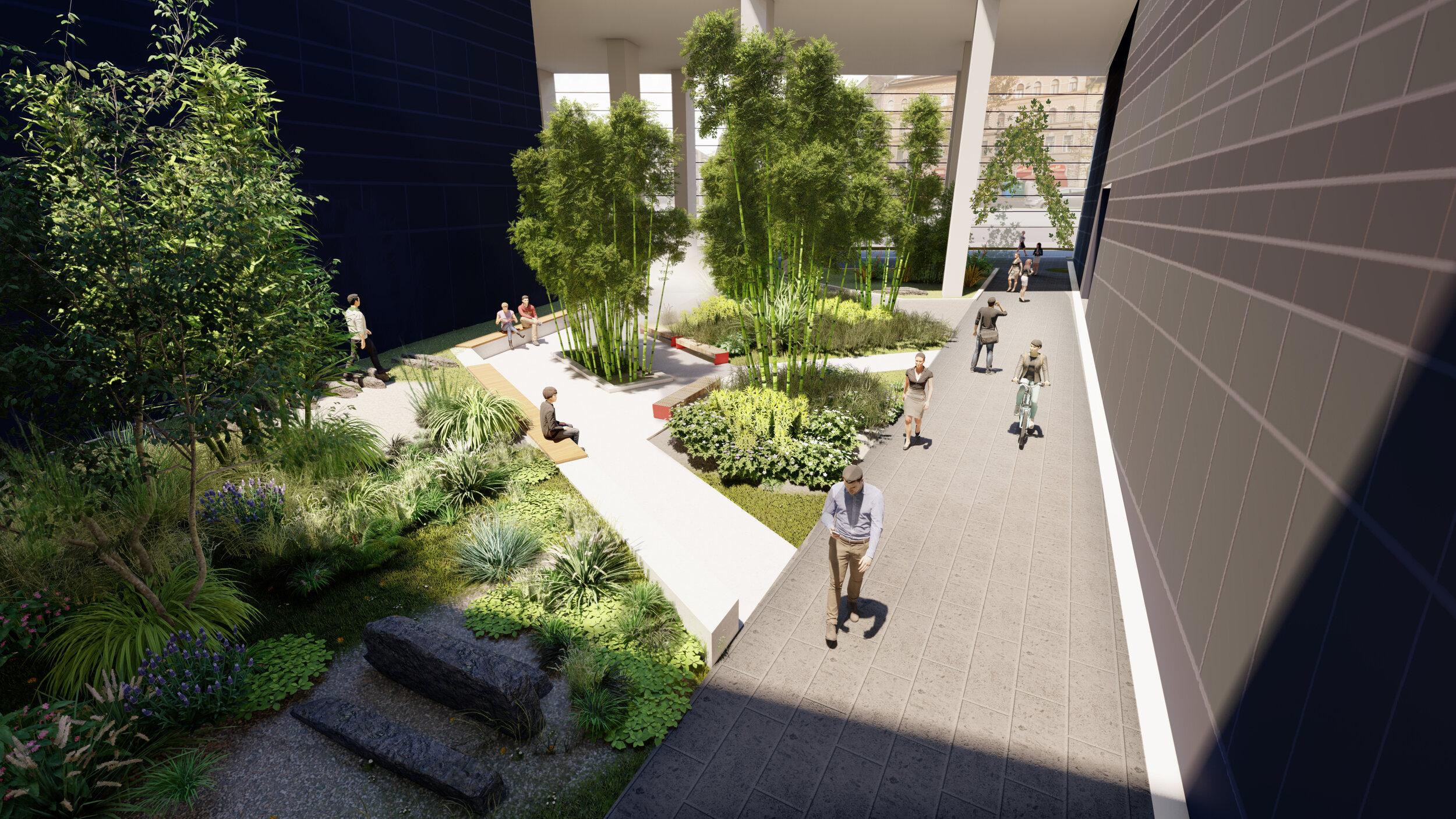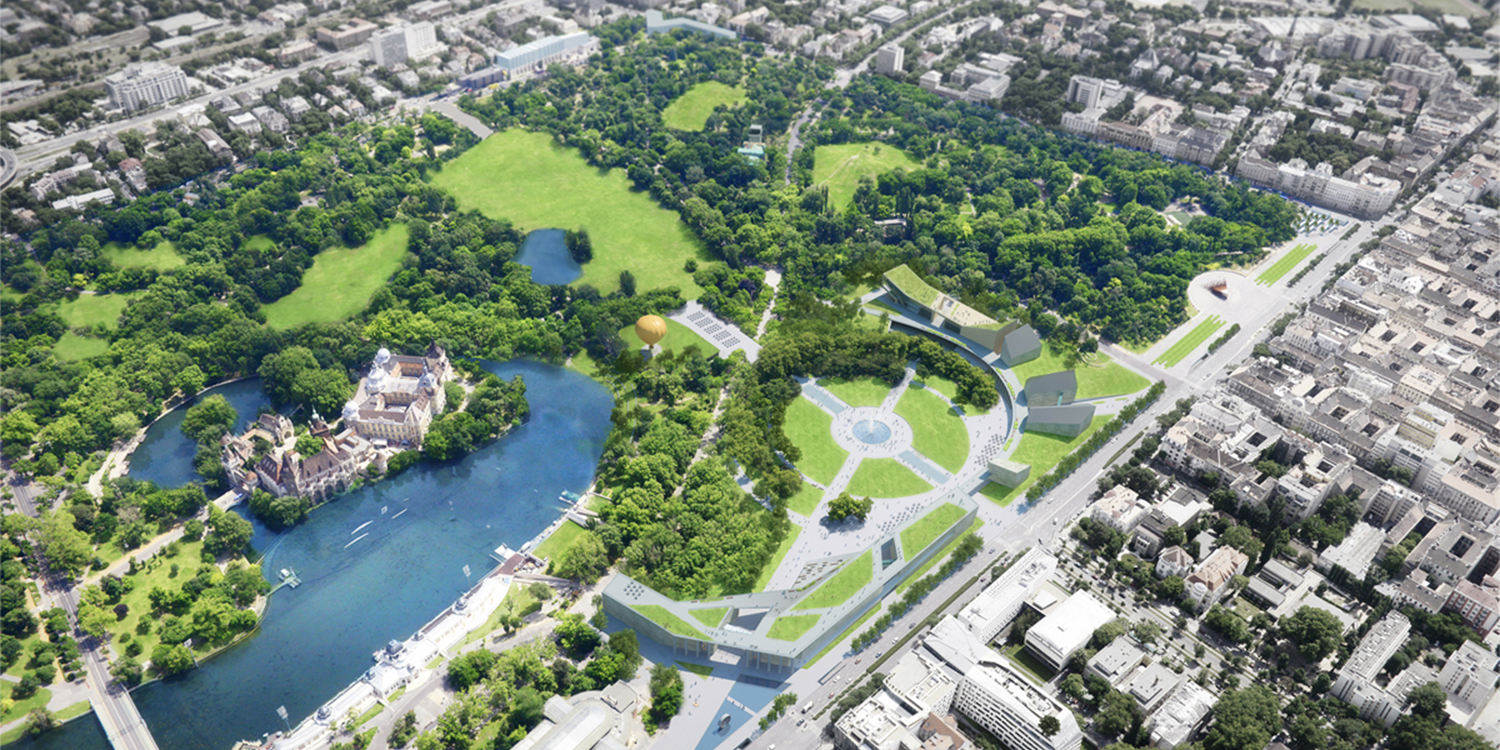
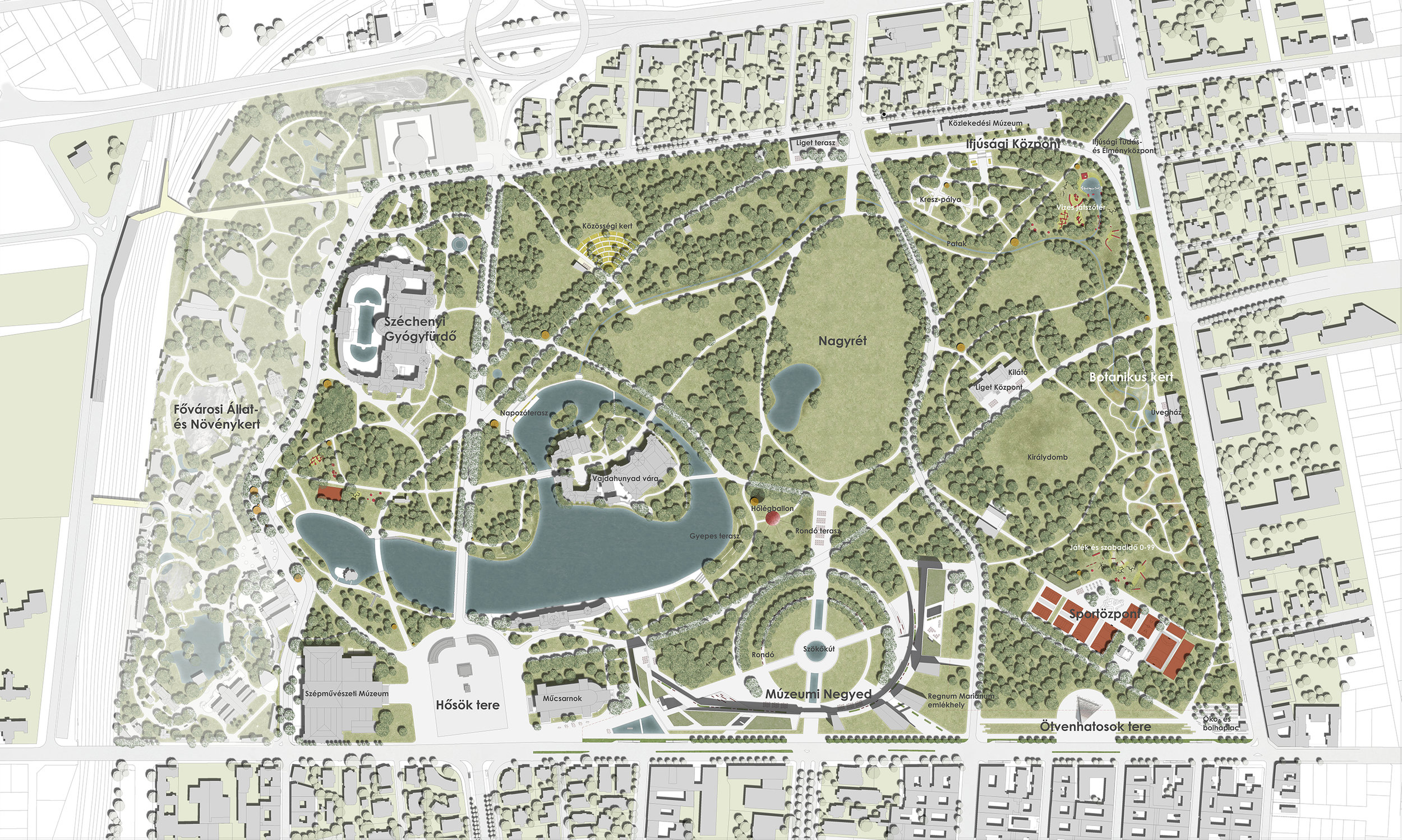
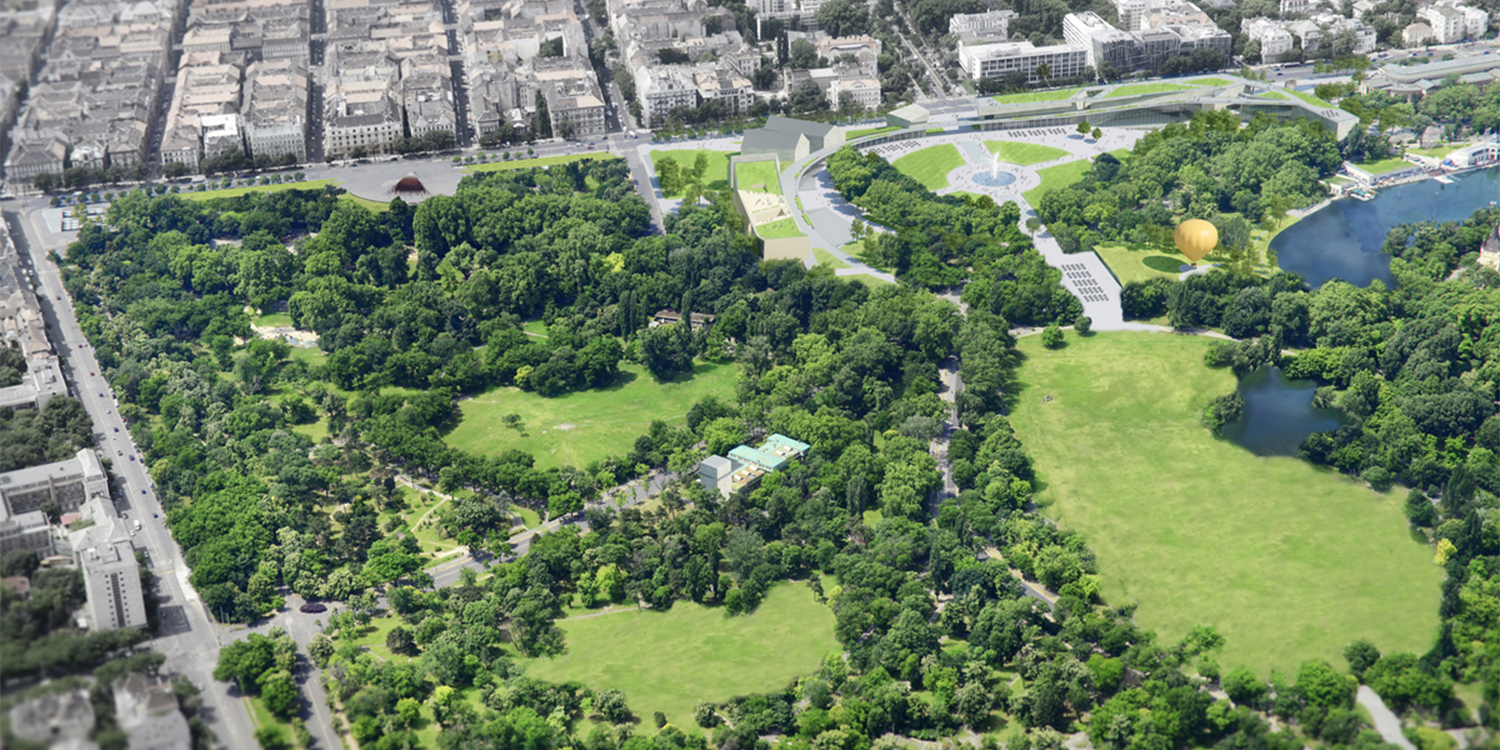
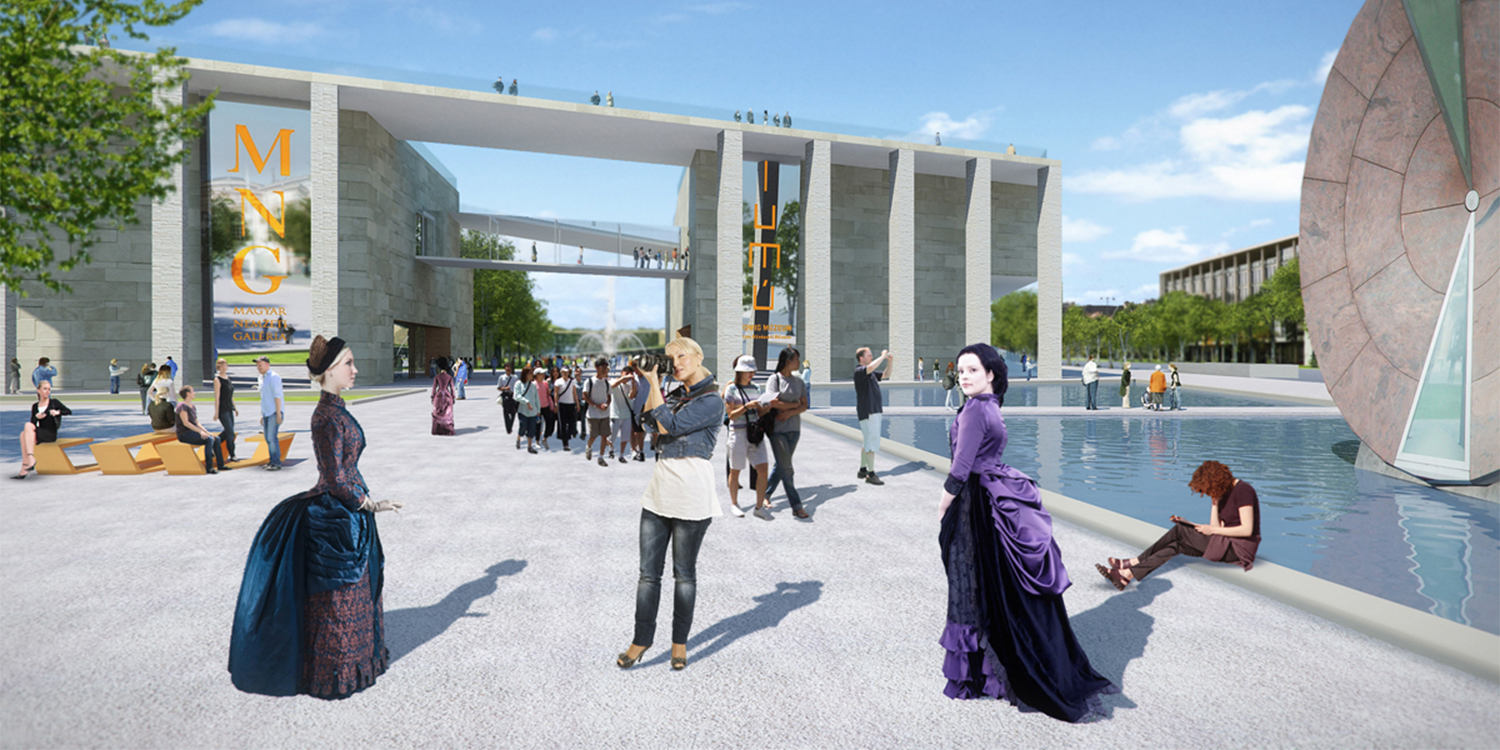
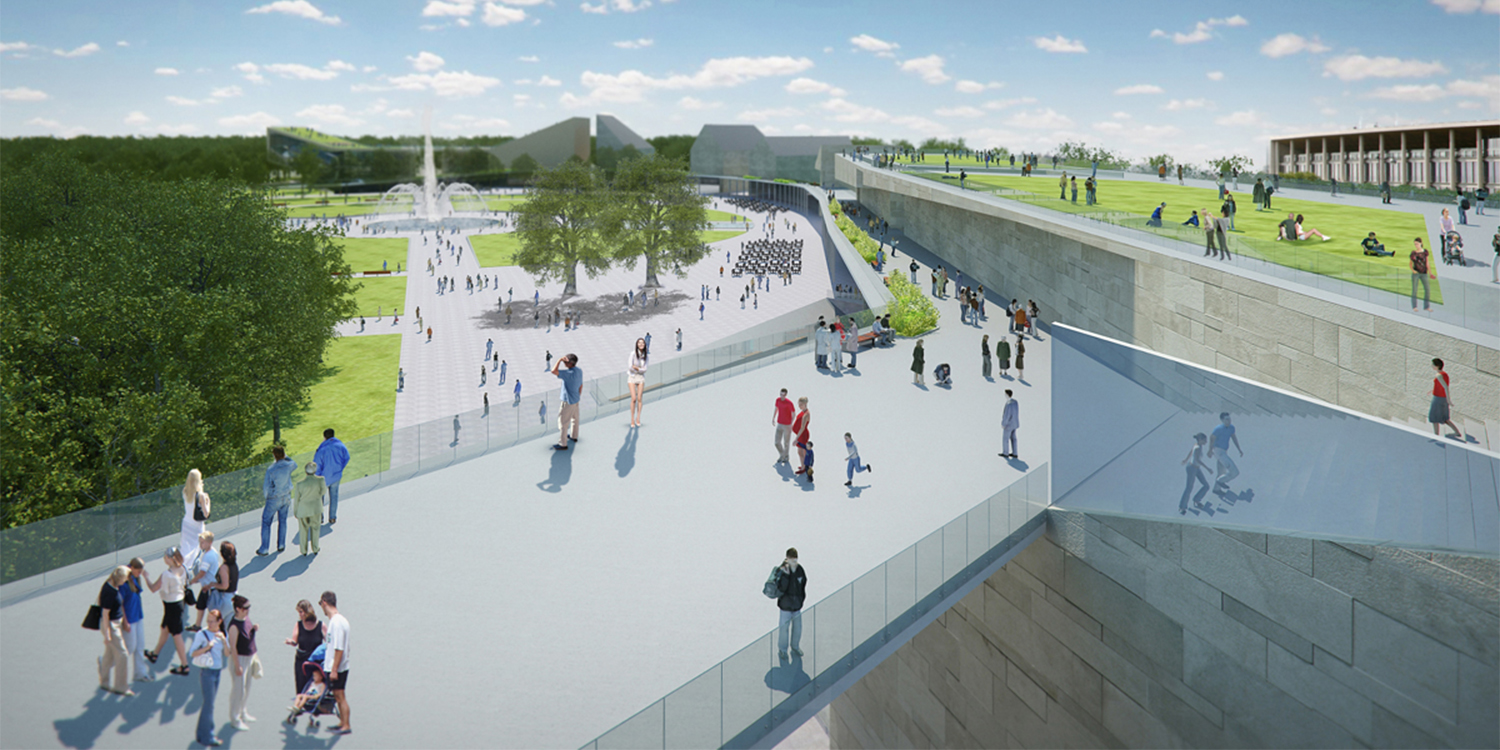



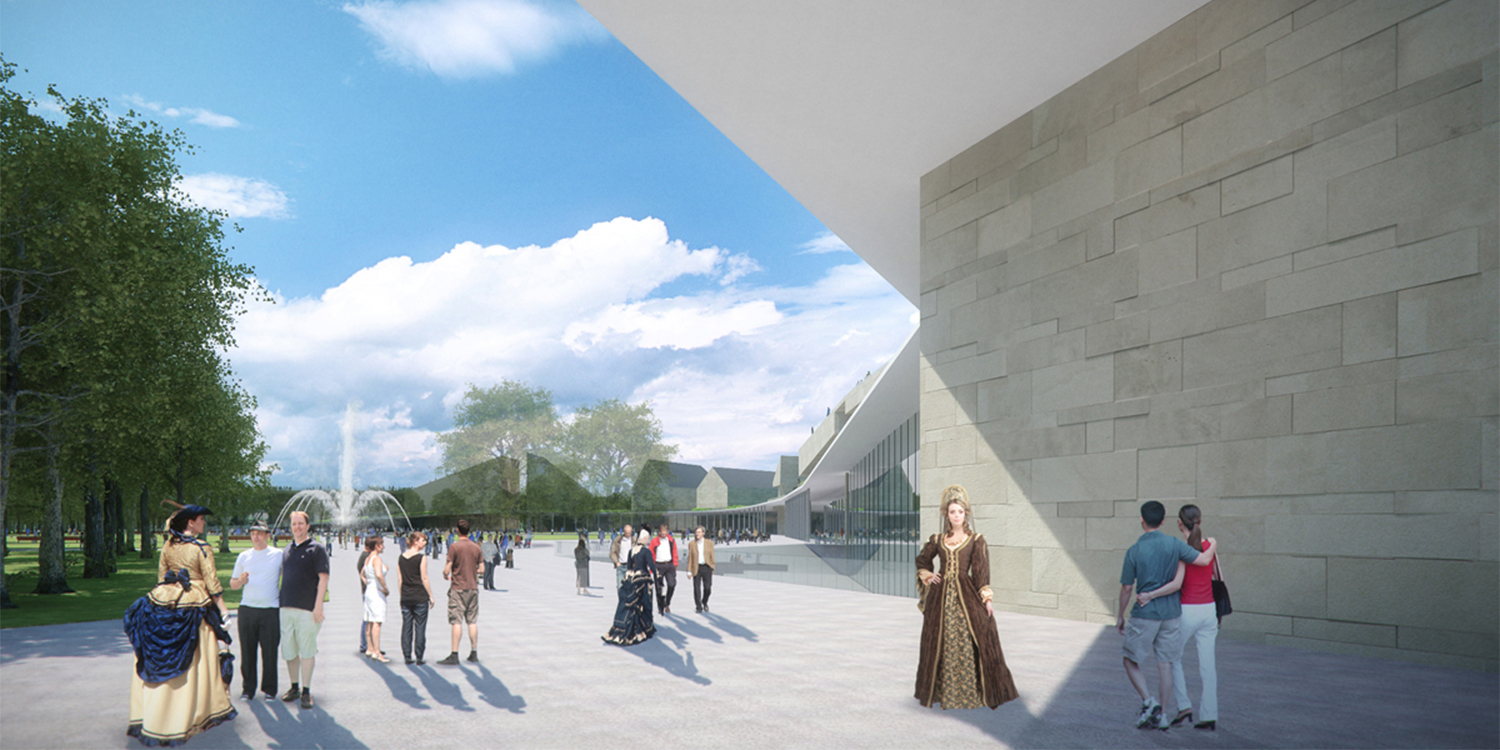
Heinrich Nebbien german landscape architect's Városliget park – the park of the city – has been compared to such prestigious parks as London's Regent's Park, Munich's Englischer Garten, Berlin's Tiergarten, and New York's Central Park. According to Nebbien's original intentions, the park is a venue for resting, meeting, teaching, education, parades, competitions, dance events and all kinds of entertainment. We would not expect anything different from Liget today.
While coming up with the conceptual design of the Museum Quarter, we could not overlook its historical past and the importance of the 200-year-old Városliget. Our main point of reference is the entrance motif conceived in 1813 - being the last surviving element of the original designs -, the Rondo. Rondo, a concentric circle, is the only geometric form of the park and therefore it is a transition between the rigid lines of the regular urban fabric and the scenic landscape of the inner park.
Liget's new design must provide opportunities, plurality and heterogeneity, as by its character, a constantly changing and evolving public space. There are countless processes that shape the park; customs and habits of children, youth, parents, adults and the elderly. The park is to be accessible to everyone let them be 0-99 years old, individuals, families or groups: it therefore becomes a multifaceted intercultural space embracing many generations. Simultaneously changing and adapting, Liget surprises, inspires, renders curious, and educates.
2013
Competition,
- purchased proposal
Client: Museum of Fine Arts, Budapest
Architect: Márton Noll (M-Teampannon)
Road design: Balázs Ercsényi (Főmterv)
Visualization: János Kiss (VR Works)
Size: 982 050 m2


